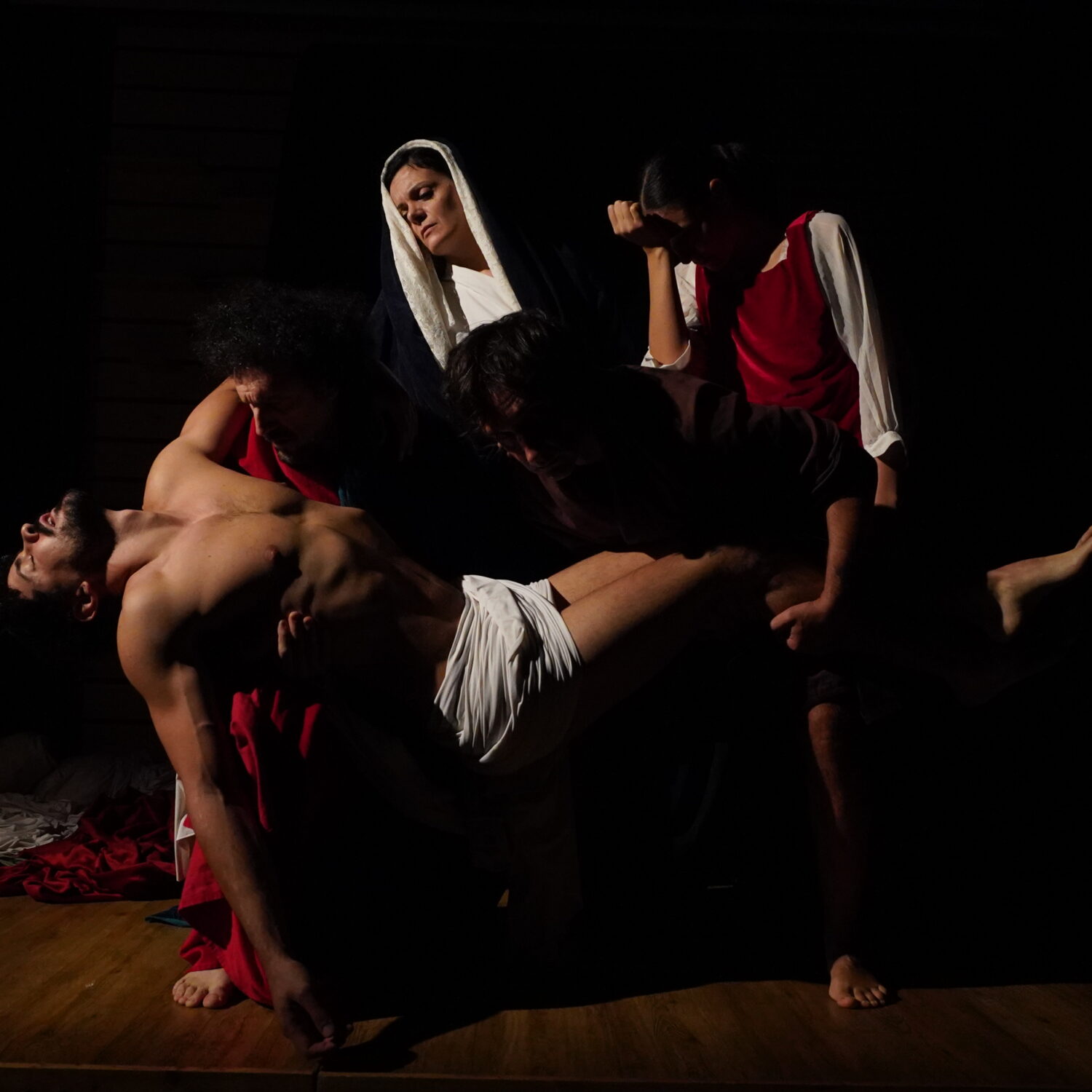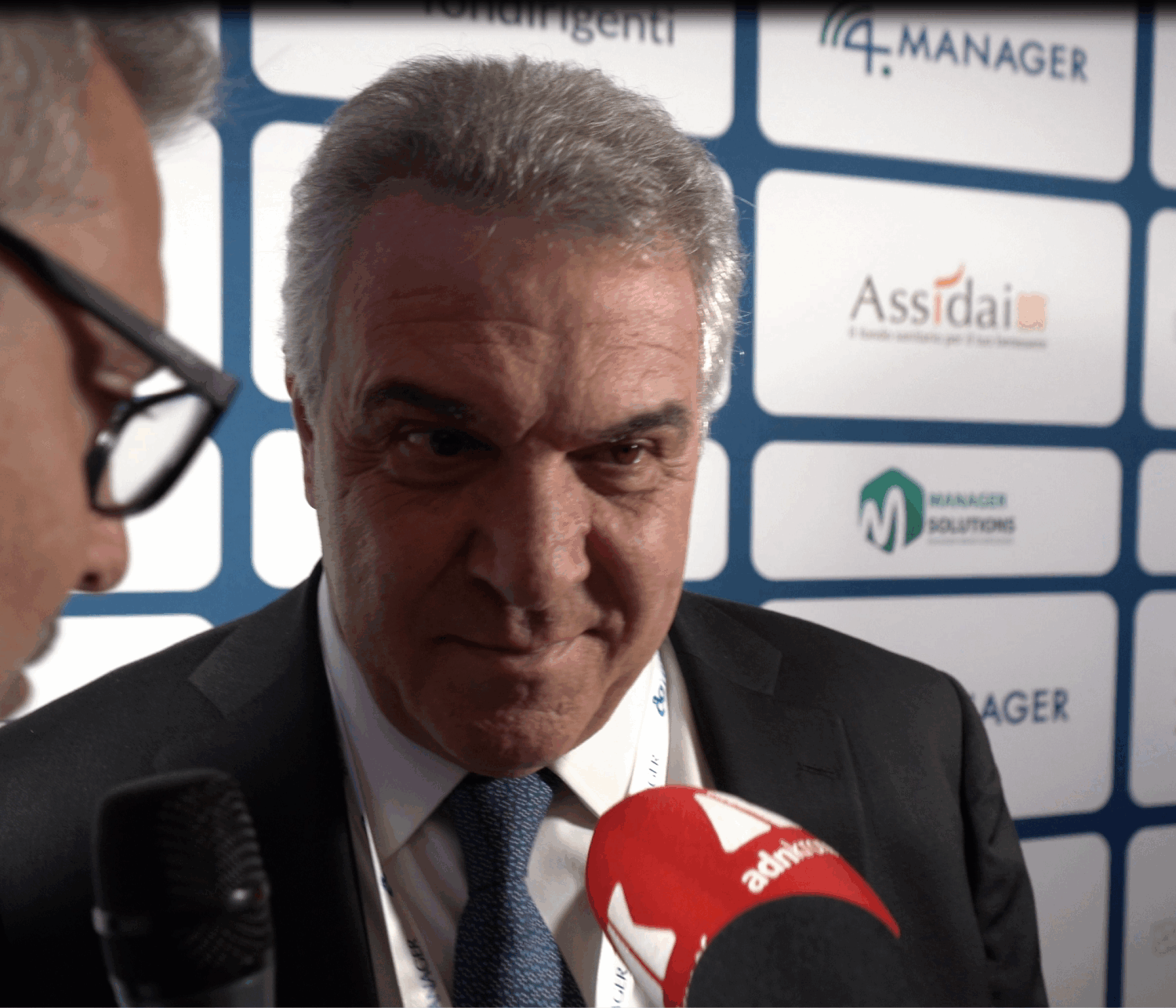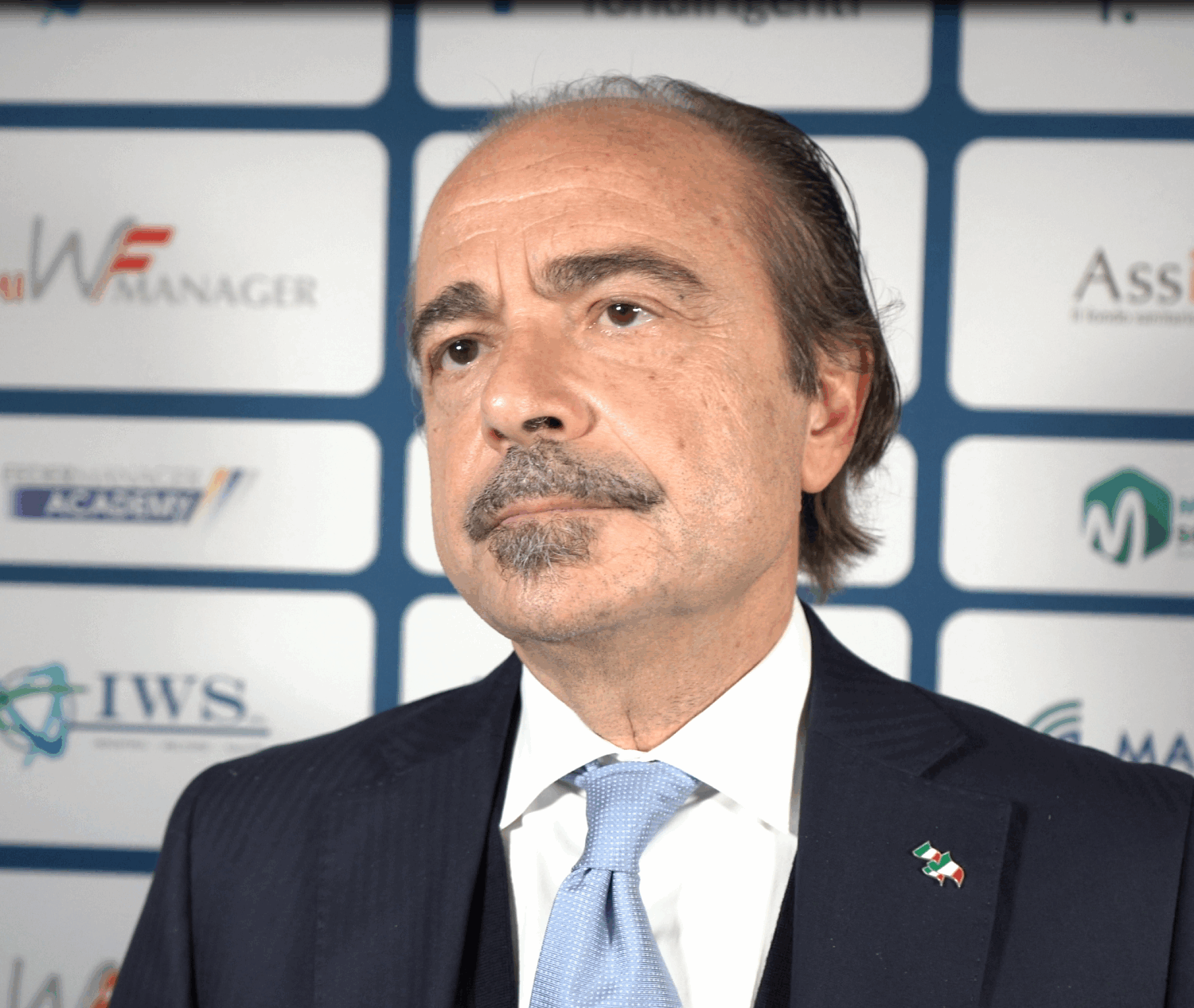With their company Teatri 35, Gaetano Coccia, Francesco Ottavio De Santis and Antonella Parrella gave new life to an ancient form of art: the tableaux vivants, the “living squares” in which the actors recreate, live, the great works of painting. From the 18th century Naples to the international stage, their work merges theatre, body, music and light, transforming the scene into an artistic workshop that takes shape in front of the eyes of the viewer. Now, after years of tour in Europe and Asia, Teatri 35 lands in the United States with Dark Light, a show inspired by Caravaggio’s masterpieces.
How was your artistic project born and how has it developed over time to become the show you will take to America?
Gaetano Coccia: This job was born a long time ago. Our company was formed in 2010 and since then we carry out a project on the tableaux vivants technique, an ancient scenic practice dating back to the eighteenth century. We did not invent anything, indeed, this mode existed already and had special success in Naples at the end of the nineteenth century. What we did was reinterpret it, modifying the artistic path.
The tableaux vivants were originally fixed images: actors recreated a painting and remained still for a long time, while the public could admire them as a pictorial work. We wanted to turn that static into motion, make it show. On stage the spectators do not only see the finished picture, but also its construction. The actors use fabrics and materials that suggest shapes and colors, and the picture takes life in front of their eyes. We do not dress like the original characters, we do not use ready costumes: with fabrics and drapes we create live composition, as if it were the palette of the painter.
How was the occasion to bring this show to the United States?
Gaetano Coccia: She was born in a totally fortuitous way. Lia Adelfi, president of the Dante Alighieri Society of Michigan, is Neapolitan as we and had heard about our company. He contacted us to propose to bring our show to the United States. From that first contact was born the proposal to participate in the program of the Institute in November. So, almost by chance, we came to organize this American tour.
It’s gonna be your first tour in the United States, right?
Gaetano Coccia: Yeah, first. As a company we traveled a lot, especially in Eastern Europe and recently also in India, but we have never been to the United States. It is a great emotion, because it will certainly be an important and new experience for us.
Returning to your work, is it correct to say that it is more than an interpretation than a representation of the paintings?
Gaetano Coccia: Yes, I would say it is an interpretation. We are never identical to the original, both for technical and artistic reasons. Some poses are impossible to maintain on stage for the time necessary, other times we simplify the picture to focus on detail. For example, in St. Francis in ecstasy the figure of the saint is supported by an angel in a complex position: we maintain the essence of the scene, but we adapt it to the physical needs of the theatre. Sometimes we also reduce the number of characters to better focus audience attention.
How is your creative process happening? Is it a collective work or is there a more defined direction?
Francesco Ottavio De Santis: It’s a shared job. As in every creative process, there is always comparison, sometimes even clash, but it is part of the game. We decide together on which author to work and build everything around a musical fabric, which is fundamental to us. Music guides movements, determines times, suspensions, moments when the scene stops to recreate the picture. We don’t say everything on stage: often gestures are spontaneous, but behind there is a harmony built over time. Of course it also happens to discuss: it is the sign of a living creation.
Why did you choose this artistic mode and why did you choose Caravaggio for this show?
Francesco Ottavio De Santis: It was almost a case. We had not decided to make a show on living paintings: It came from a path of body theater, research on the body and its relationship with music and space. During some stage exercises, working with few objects and fabrics, we started playing with Caravaggio’s images. We were struck by his ability to represent the precise moment in which the scene is performed or just completed. Caravaggio is, in this sense, an ante litteram director: his painting is already theatre.
The title of your show, Clear Dark, recalls the distinctive stylistic figure of Caravaggio. How much do the lights count in your staging?
Gaetano Coccia: They count a lot. Caravaggio’s recognisability passes through the use of cutting light, and this technical aspect also helps us on stage. A side lighthouse is enough, two meters in front of the center, and you already create that Caribbean feeling.
We often use a black velvet background, which cancels the depth and returns the two-dimensionality typical of its paintings. Then there are the colors: red, white and black, the three fundamental tones dominating its palette. All these elements together recreate the suggestion we want to convey. It’s like being inside Caravaggio’s workshop, with that beam of light that, it is said, entered from the roof of his studio to illuminate the scene. Our idea is to revive that same magic.
Is there room also for the man Caravaggio, for his tormented life?
Gaetano Coccia: No, we don’t deal with the biographical dimension. It is not a philological show on the artist or on the man “ cursed”. We tell Caravaggio through his works, not through his life. Of course, those who know his history can recognize those references, as in the Death of the Virgin, but it is not our focus. We return the visual and emotional power of his language, not the chronicle of his existence.
What is your stylistic figure?
Francesco Ottavio De Santis: Ours is a mimesis theatre, but not fiction. We do not re-create a “fake” reality, but an effect of authentic reality. We reconstruct what could happen in Caravaggio’s study, without tricks or artificials, and this is what generates the emotion of the painting.
We do not seek only the visual resemblance, but the emotionality Caravaggio put in his canvases. We try to return the life that was inside those images, the vibration of the creative moment, the tension between light and shadow.
What are your expectations for this American tour?
Gaetano Coccia: We’re very curious. The first date will be November 8 at the Marygrove Theater in Detroit, then November 10 in Indianapolis. We look forward to seeing how the American audience will welcome our work.
We turned a lot but bringing our show to America has a special charm for us. Every time I was there, I felt great enthusiasm towards Italian culture, and this makes me think that our show will be welcomed with warmth. The expectations are high, but they are beautiful ones, which give energy and push to give the best.
L’articolo The work of Teatri 35 on Caravaggio’s <i>tableaux vivants</i>, explained by them proviene da IlNewyorkese.






